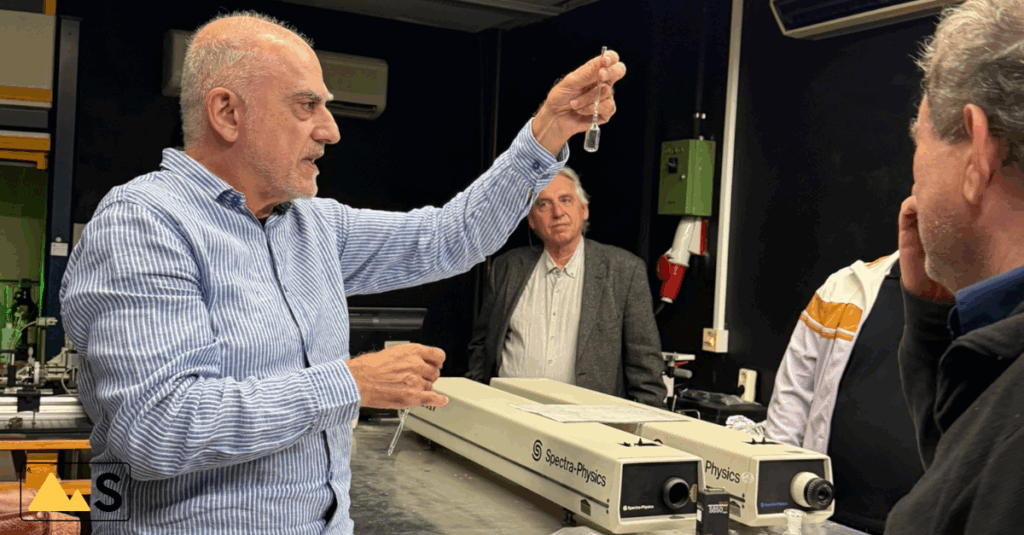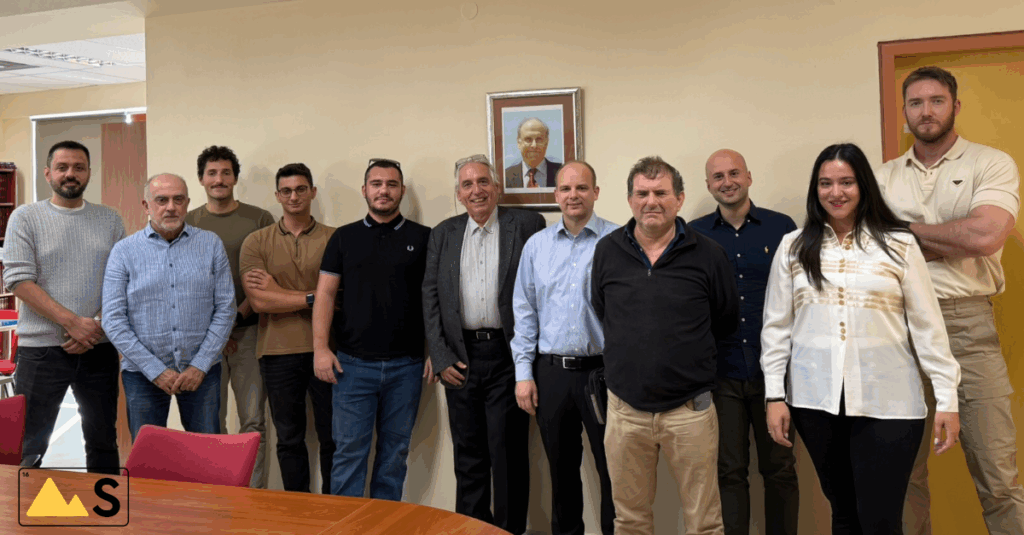On 8 October, the Sulphurreal consortium held its 24-months project meeting in Patras, Greece. The meeting, hosted by the Department of Chemical Engineering of the University of Patras, focused on updates and developments in the project’s key objectives. It was full of valuable exchanges and inspiring discussions.
Progress and achievements
All project participants from research, academia, business, and industry came together to review the current status of the various work packages. Each team shared updates, highlighting progress and achievements across all project areas.
Current work includes:
- Long-term activity tests of structured sulphur trioxide splitting catalysts
- Setting up a sulphuric acid dissociation/ sulphur trioxide splitting prototype pressurised reactor
- Design, engineering and construction of a sulphur dioxide disproportionation reactor
- Development of coatings and material testing for a sulphur combustor
- Experimental validation of sulphur combustion reaction kinetics
- Flowsheeting and scale-up of process
- AI-leveraged Digital Twin
- Life Cycle Assessment
Visiting the laboratory
At the end of the productive meeting, the participants on-site had the opportunity to take a closer look at the hosting team’s facilities. The group visited the Laboratory of High Temperature Physical Chemistry and Applied Molecular Spectroscopy, and had on-site discussions on the catalyst testing protocols and the procedures used in the catalyst test apparatus. The pertinent modifications for operating under pressurised conditions were discussed.

Special focus was given in containment techniques for studying catalytic systems for sulphur trioxide splitting and sulphur dioxide disproportionation by means of in situ Raman spectroscopy. Finally, the vacuum line, inert atmosphere and glass blowing installations of the Laboratory were presented.
We are excited about the upcoming phases of the Sulphurreal project as we continue to advance this innovative approach to directly store concentrated solar energy in solid elemental sulphur. In the next stages, we look forward to further refining the chemical cycling process and strengthening the collaborative efforts within our consortium, which are key to achieving impactful and sustainable solutions.
Find out more about the consortium here.
Find out more about the project here.
